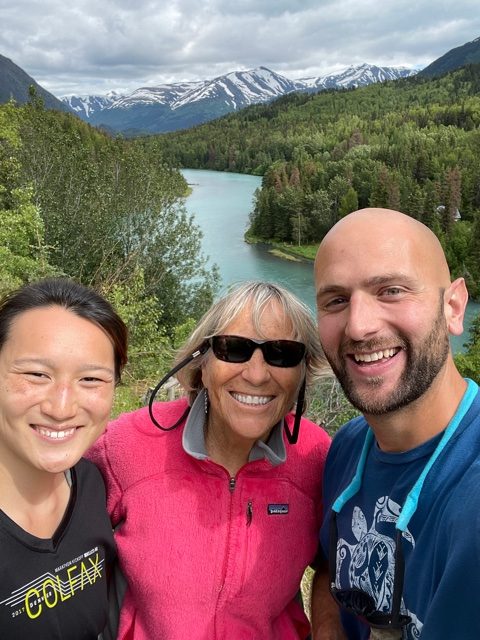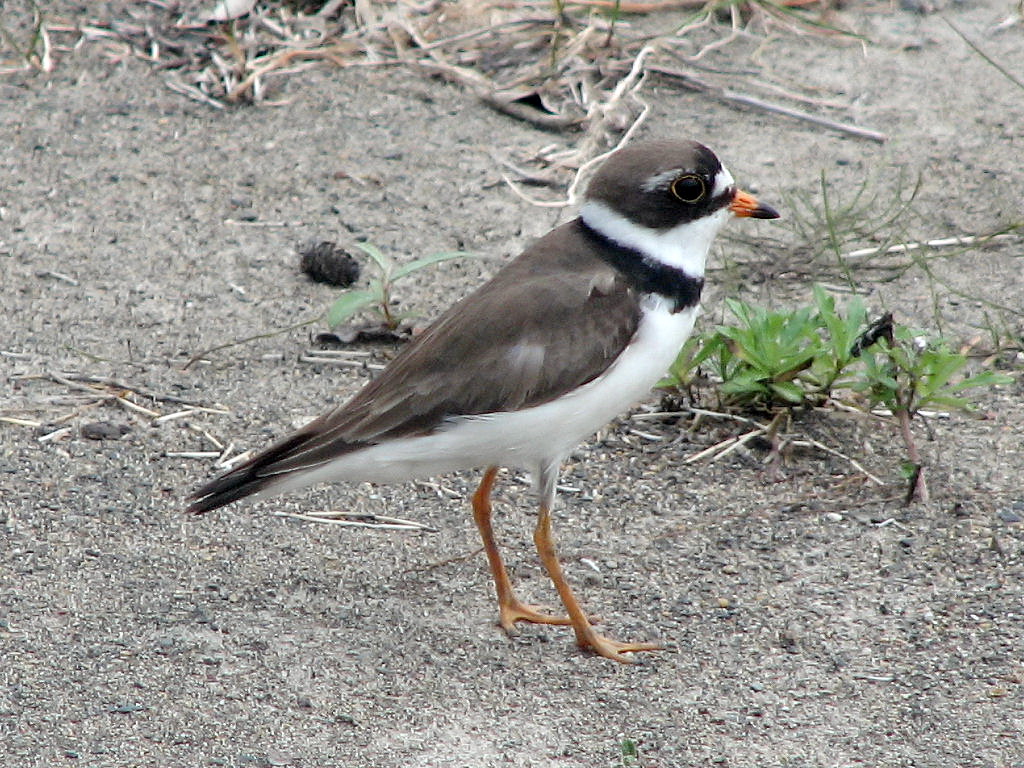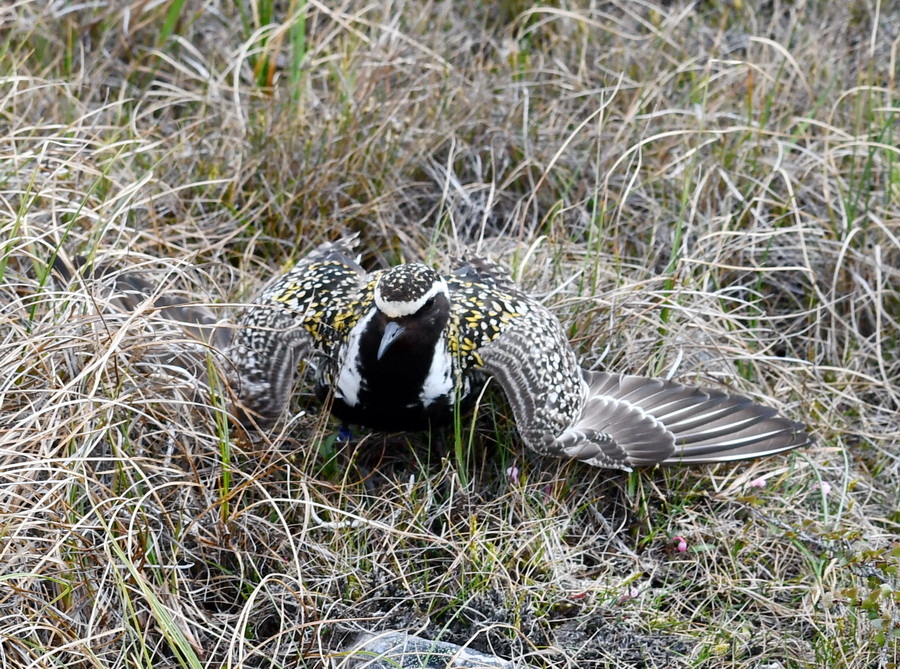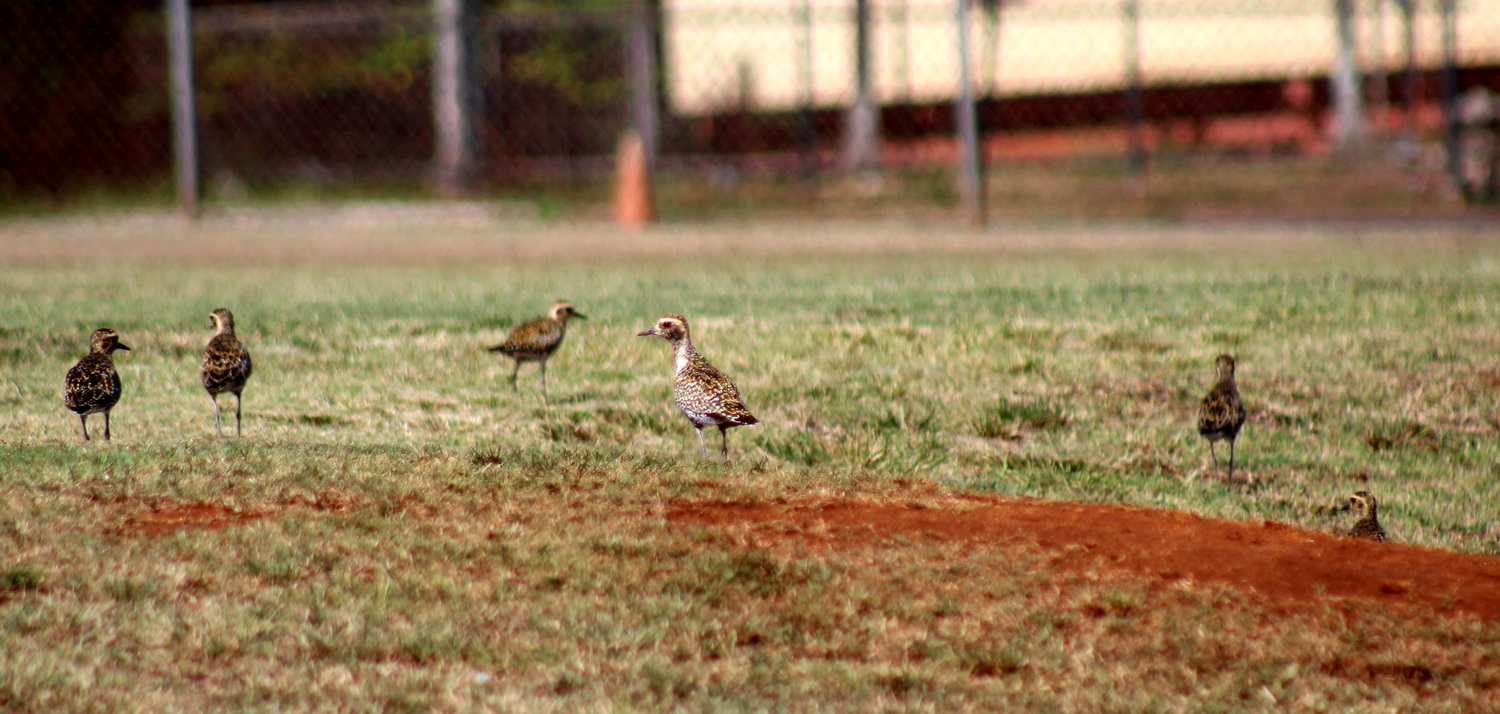
Our Portland-based niece and her husband, Kali and Brad Schultz, searched for plovers with me in Alaska. The Russian River, behind, isn’t plover territory, but thrilled us with leaping salmon. (Brad’s long-arm selfie with my phone.)
July 2, 202
Last week I went to Alaska where I didn’t see a single Kolea. That’s because instead of going to remote tundra areas where our plovers spend most of May, June, and July, this visit was a road trip from Anchorage to Homer. And although I enjoyed seeing moose, bears, sandhill cranes, and countless other animals in these human-populated areas, I yearned to see at least one plover.

Signs on Anchorage’s Tony Knowles Coastal Trail explain how to behave when confronted by a moose. I thought such an encounter unlikely. I was wrong. ©Susan Scott

A moose on the trail brought me, on my rented bike, to a screeching halt. ©Susan Scott

I waited until the moose lost interest in me and ambled off into the woods that border urban Anchorage. ©Susan Scott
Near the end of my vacation, a pair of plovers granted my wish. Not Pacific Goldens, but cousins close enough to satisfy my shorebird longing. While walking the beach along the Homer Spit, I had a close encounter with two semipalmated plovers.
Semipalmated means what it sounds like: half a palm. The name comes from the bird’s species name semipalmatus, a Latin term referring to the bird’s partially webbed feet. The bird’s first scientific name, Charadrius, means yellowish bird, (although I don’t see it.)

A clear picture of a semipalmated plover. D. Gordon E. Robertson photo, Creative Commons, Wikipedia.
Compared to Kolea, these plovers are pipsqueaks, even smaller than our Sanderlings, or Hunakai, that run like wind-up toys up and down the beaches with the waves. Semipalmated plovers weigh from 1-to-2-ounces (a CD is about an ounce), are about six inches long, and so well camouflaged that even after Kali pointed the bird out, I still didn’t see it. The plovers’ striking feathers practically disappear against the blacks, browns and whites of the rocky beaches, where they forage for insects, worms, shrimp, and crabs.

My first sighting of a semipalmated plover. This is just feet off the Homer Spit road (sign top left.) ©Susan Scott
Amazingly, these tiny plovers, like most other shorebirds, migrate thousands of miles each year, nesting in summer throughout Canada and Alaska, and wintering in the southern U.S., the Caribbean, and South America. Rarely, a semipalmated plover makes it to Hawaii. One was recorded on eBird this year in March at Puuhonua O Honaunau on the Big Island.
As we continued walking, we apparently got close to the nest, because both parents began flailing about and dragging their wings as if broken. I saw nesting Kolea also do this during my visit to the tundra outside Nome in 2018. Researchers believe this fake-injury ploy lures foxes, birds of prey, and other predators away from the nest. For us humans, however, it’s a dead giveaway that advertises not only the parents’ presence, but also the fact that eggs or chicks are nearby.

A male Kolea performing its broken-wing behavior upon our approach near its nest. June, 2018, Nome, Alaska. © Susan Scott
After seeing that, I backed away and left the alarmed parents in peace.

Our semipalmated plover parent pretending to be injured. ©Susan Scott

As we backed away, the bird miraculously recovered. We got the message and did not look for the nest. ©Susan Scott
In March, plover expert, Wally Johnson, and I had tentatively planned an Alaska tundra trip this summer to photograph Kolea nests and chicks. Back then, however, the state of the pandemic, and the efficacy of Covid vaccines against variants was uncertain enough that Wally felt safer postponing the Kolea trip until 2022.
Kali, Brad, and I went anyway. But even with a more urban vacation, Alaska still rewarded us daily with postcard-perfect scenery behind jaw-dropping wildlife. For next year’s visit, though, I’m going north to the tundra to say hello to our Kolea.

A common murre (a flock of hundreds below) flies over a resting sea otter in Kachemak Bay off Homer. ©Susan Scott
A note on this year’s Kolea that did not migrate.
Now that I’m home, I’m still looking for Kolea. For reasons known only to the birds, some individuals skip migrating and spend the summer here in Hawaii. June is the only month that we can reliably count summering-over birds, because May sightings might be late leavers, and July sightings might be early returnees.
This past month of June, the www.koleacount.org website received reports of 28 plovers at 9 sites. If you need an early Kolea fix, check out the locations below. The shy flock at Waiau District Park arrives around 4 PM and flies off at the slightest disturbance. I missed seeing them during my stops there, but this flock’s loyal Kolea fan, Evelyn Nakanishi, who walks the park most days, took photos for me to enjoy and share.

Kolea at Waiau District Park, Pearl City, June 19, 2021. ©Evelyn Nakanishi photo.
Thank you for reporting all sightings on the REPORT tab of this site. Please bear with us as we work on clarifying the form for the 2021-2022 season reports.
10-12 Kolea at Waiau District Park 98-1650 Kaahumanu St, Pearl City, HI
1 Kolea at 95-1176 Makaikai Street, Mililani
1 Kolea on Kaiolohia Way, Hawaii Kai
1 Kolea at Honolulu Country Golf Club (private)
1 Kolea in Koko Crater Botanical Garden
2 Kolea in Punchbowl Cemetery: video by Ceciy Shizuru https://youtu.be/wyWq_X4em7g
1 Kolea at Kaloko-Honokohau NHP–Aimakapa Pond (Big Island)
1 Kolea in Waialae Iki Kamaole Park
8 Kolea in Nuupia Ponds, Marine Corp Base, Hawaii (restricted access)
Not reported on this site, but on https://ebird.org/checklist/S90731944, were 87 Pacific Golden-Plovers at Pearl Harbor National Wildlife Refuge, Honouliuli Unit, a wetland area with restricted access. I’m wondering if the Waiau District Park birds that come and go are part of this summering flock.